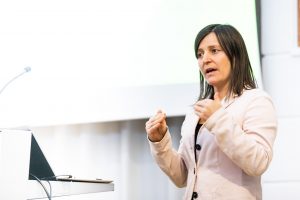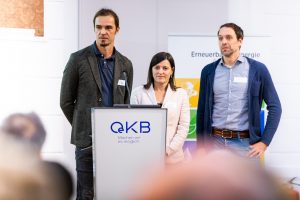Research results of the GEL S/E/P I and II projects as a building block of municipal heat planning

On November 15, the Austrian Renewable Energy Association hosted the expert dialog “Municipal Heat Plans” in the Vienna Reitersaal. Representatives from the Austrian Renewable Energy Association, universities, provinces and municipalities as well as from the Federal Ministry for Climate Action, Environment, Energy, Mobility, Innovation and Technology (BMK) discussed specific approaches to municipal heat planning from Germany, Denmark and Austria. Ingrid Schardinger (RSA – iSPACE), Alexander Rehbogen (SIR – Salzburger Institut für Raumplanung und Wohnen) and Franz Mauthner (AEE Intec – Institut für Nachhaltige Technologien) spoke about the institutionalization of spatial energy planning for the heating transition. Schardinger specifically presented the heat atlas developed around the GEL S/E/P I and GEL S/E/P II research projects, which represents an innovative and forward-looking basis for sustainable energy planning.
Municipal heat planning

(c) EEÖ
The instrument of municipal heat planning is seen as possible support for the challenges surrounding the necessary energy transition. Municipal heat planning – i.e. at municipal level – is sustainable as it takes local energy requirements and resources into account. Local adaptation promotes renewable energies, efficiency and strengthens acceptance in the community for environmentally friendly solutions. In addition, important planning competencies lie at municipal level. Practical examples from Germany and Denmark were presented at the expert dialog.
Projects „Spatial Energy Planning (GEL S/E/P) I and II”
One Austrian project that is closely linked to municipal heat planning is “Spatial Energy Planning for Heat Transition (GEL S/E/P I)”, in which stakeholders from the federal states of Styria, Vienna and Salzburg cooperated. The heat atlas was developed here with a comprehensive information base. Automated analyses support administrative processes, while the follow-up project “GEL S/E/P II” has been integrating electricity and mobility data since 2021 in order to further optimize energy planning. The speakers Schardinger, Mauthner and Rehbogen pointed out that solid spatial information is a necessary prerequisite for tailor-made solutions when it comes to the future renewable heat supply of every municipality.
Practical examples from Germany and Denmark
In Germany, municipal heat planning has become increasingly important. Currently, municipalities across the country are not only being obliged to do so, but above all are being empowered to design climate-friendly heating plans themselves. The German Energy Agency offers support and knowledge transfer, but emphasizes the need to see heat planning not just as an obligation, but as a local planning instrument. In comparison, Denmark has been practicing municipal heat planning for 44 years, an instrument that was introduced in 1979 during the oil price crisis. The experiences from Denmark show that clear goals, political will and the involvement of the population are crucial in order to successfully shape the heat transition.

